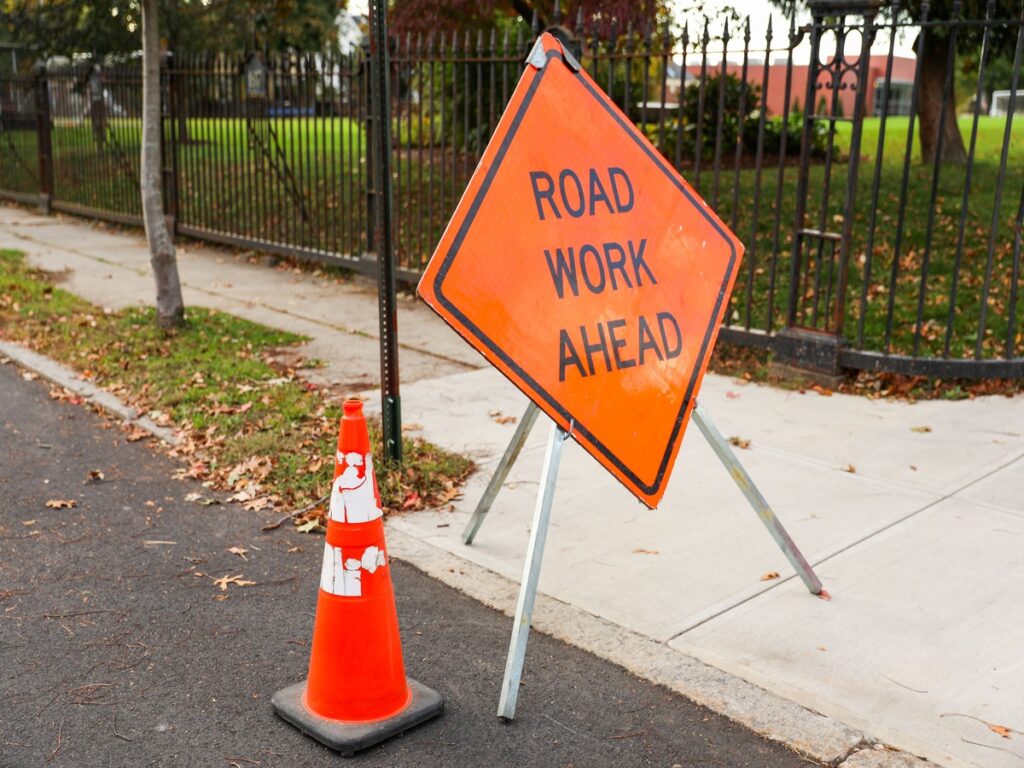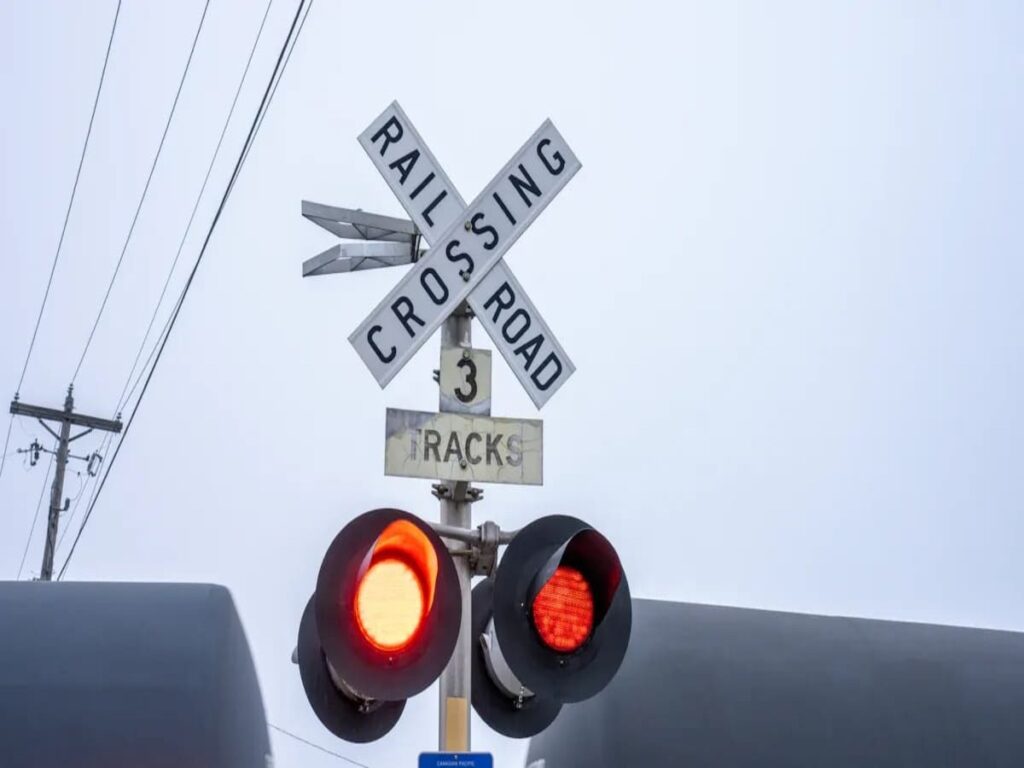
Street Cones 交通安全に重要な役割を果たす, offering essential visual cues to drivers and pedestrians. These simple yet effective tools have evolved significantly over the years. Initially crafted from wood and concrete, modern street cones now utilize durable plastic and reflective materials. This transformation enhances their visibility and functionality, especially in temporary traffic control situations. The iconic orange cone has become a universal symbol of caution and safety. As a key traffic control measure, OPTsigns Street Cones help manage traffic flow and protect workers, すべての人のためのより安全な道路を確保します.
The Evolution of Traffic Cones
Early Designs and Applications
1900年代初頭, street cones began their journey as simple wooden or metal stakes. These early designs lacked effectiveness and visibility, making them less reliable for road safety. As urban development progressed, the need for a more efficient safety device became apparent. By the 1940s, the iconic orange cone emerged, designed to protect both road workers and drivers. This bright color quickly became synonymous with caution and safety, providing a clear visual cue in various traffic scenarios.
Street cones initially found their place in construction zones and accident scenes. Road management authorities and construction companies extensively used them to divert traffic, mark lanes, and indicate road hazards. 時間とともに, the versatility of orange cones expanded beyond traffic applications. They became essential in non-traffic scenarios, such as crowd control at events and marking off restricted areas.
Move Toward Standardization
The late 20th century marked a significant turning point for traffic cones. Governments and regulatory bodies began establishing standardized specifications to ensure consistency and reliability. This move toward standardization transformed traffic cones from simple tools into essential equipment for road safety management.
Advancements in manufacturing technologies played a crucial role in this evolution. Modern traffic cones are primarily made from flexible thermoplastic materials like polyvinyl chloride (PVC) またはゴム. These materials provide durability, 気象抵抗, and the ability to revert to their original shape after being compressed or run over. Reflective coatings and environmentally friendly materials further enhance their functionality and appeal.
今日, orange cones come in various versions, some equipped with additional features such as chains, ライト, noises, シンボル, と言葉遣い. Despite these innovations, the orange cones remain a universal symbol of road safety. Its bright color and standardized design continue to direct traffic, indicate construction zones, and protect workers worldwide.

Key Factors in Standardization
Material and Design Innovations
You might wonder how traffic street cones have become such effective safety tools. The answer lies in their material and design innovations. 最初は, traffic safety cones were made from wood or metal, which lacked durability and visibility. 今日, manufacturers use flexible thermoplastic materials like ポリ塩化ビニル (PVC) またはゴム. These materials ensure that traffic safety cones are not only durable but also capable of withstanding harsh weather conditions. They can even return to their original shape after being compressed or run over.
Reflective coatings have further enhanced the high visibility of traffic safety cones, making them more effective during nighttime or low-light conditions. This improvement aligns with the 均一な交通制御装置のマニュアル, which provides guidelines for designing and using traffic control devices, including orange cones. These advancements in materials and design have transformed traffic cones into essential safety features on roads worldwide.
Role of Government and Authorities
Government and regulatory bodies have played a crucial role in the standardization of traffic cones. By establishing specific requirements for height, 色, and luminance, authorities ensure that traffic cones meet safety standards. The 私たち. Department of Transportation’s Federal Highway Administration Manual for Uniform Traffic Control Devices sets out these requirements, ensuring that traffic cones are consistent and reliable.
Authorities also emphasize the importance of reflective collars on traffic cones, which enhance their visibility and contribute to road safety. These regulations help maintain uniformity and effectiveness, making traffic cones indispensable safety features in various traffic scenarios. これらの基準を順守することによって, you can trust that traffic orange cones will guide you safely through construction zones, 事故シーン, and other potentially hazardous areas.

The Integration with Road Safety Policies
Traffic orange cones have become integral to road safety policies worldwide. Their compliance with international standards ensures that they remain effective tools in traffic management. You might wonder how these simple devices have achieved such a significant role. The answer lies in their adherence to global guidelines, such as those outlined in the 均一な交通制御装置のマニュアル. This document provides comprehensive instructions for designing, placing, and using traffic control devices, トラフィックコーンを含む. これらのガイドラインに従うことにより, traffic orange cones foster uniformity and enhance road safety on a global scale.
How Street Cones Complied with International Standards
Traffic safety cones comply with 国際基準 by meeting specific requirements for size, 色, そして反射性. These standards ensure that traffic safety cones are visible and effective in various conditions, contributing to their role as essential safety features. 例えば, the Regulations concerning the size and use of safety traffic cones in General Industry clarify the necessary dimensions and usage protocols. これらの規制を順守することによって, traffic safety cones maintain their reliability and effectiveness in traffic management.
Strategic placement of traffic safety cones also plays a crucial role in compliance. Proper positioning in work zones affects how drivers and workers respond to traffic, 安全性の向上. You can see this in action when traffic safety cones guide vehicles through construction areas or around accident scenes. Their strategic placement ensures that traffic flows smoothly and safely, 事故のリスクを減らす.
The Role of Government Regulations in Promoting Widespread Use
Government regulations have significantly promoted the widespread use of traffic cones. Authorities recognize the importance of these devices in traffic management and road safety. By establishing specific requirements, governments ensure that traffic cones meet safety standards and remain consistent across different regions. The 私たち. Department of Transportation’s Federal Highway Administration Manual for Uniform Traffic Control Devices sets out these requirements, ensuring that traffic cones are reliable and effective.
Reflective collars on traffic cones enhance their visibility, 特に夜間または低照度の状態で. Government regulations emphasize the importance of these features, further promoting the use of traffic cones as essential safety tools. これらの基準を順守することによって, you can trust that traffic cones will guide you safely through various traffic scenarios, 建設ゾーンから緊急事態まで.

Technological Innovations Driving the Standardization of Traffic Cones
近年では, technological advancements have revolutionized traffic orange cones, transforming them into smart devices that enhance traffic management and road safety. These innovations have made traffic cones more than just static markers; they now play an active role in ensuring efficient and safe road environments.
The Introduction of Smart Traffic Cones
Smart traffic orange cones have emerged as a groundbreaking development in traffic management. Equipped with embedded sensors and IoT テクノロジー, these cones provide real-time information and alerts to both drivers and authorities. This capability allows for better traffic management, accident prevention, and efficient roadwork. By gathering and transmitting data related to traffic patterns and road conditions, smart cones can send immediate alerts about accidents or obstacles, significantly improving response times.
Key Features of Smart Traffic Cones:
- Embedded Sensors: These sensors detect changes in traffic flow and road conditions.
- リアルタイムアラート: Immediate notifications are sent to authorities regarding any incidents.
- Data Transmission: Information is shared with traffic management systems to optimize road safety.
Smart traffic cones not only enhance safety features but also contribute to a more dynamic and responsive traffic management system. Their ability to communicate real-time data ensures that roads remain safe and efficient, 挑戦的な状況でも.
How Traffic Cones Work with Automated Traffic Systems
The integration of traffic orange cones with automated traffic systems marks a significant leap forward in traffic management. IoT-enabled traffic orange cones communicate real-time data on traffic flow, 危険, および道路状況. This data is crucial for advanced traffic-management systems, which use it to improve traffic flow through construction zones and other high-risk areas.
Benefits of Integration:
- トラフィックフローの改善: Automated systems adjust traffic signals and routes based on real-time data from traffic cones.
- 安全性の強化: Real-time updates help prevent accidents by alerting drivers to potential hazards.
- Efficient Road Management: Authorities can make informed decisions quickly, reducing congestion and improving overall road safety.
By working seamlessly with automated systems, traffic cones ensure that traffic management remains proactive and effective. This integration not only enhances the high visibility of traffic cones but also solidifies their role as indispensable safety features on modern roads.
The Social Impact of Traffic Cones
Changing Public Perception of Traffic Cones as Safety Symbols
You might not think much about traffic cones when you see them on the road. しかし, these orange cones have become powerful symbols of road safety. 時間とともに, they have evolved from simple markers to essential tools that guide and protect drivers and pedestrians. Their bright color and strategic placement make them hard to miss, ensuring that you stay alert and cautious.
The pandemic has also influenced how people perceive road safety. A global survey revealed that 35 percent of respondents believe transportation has become more dangerous since the pandemic began. これにもかかわらず, 55 percent of people reported driving more carefully. This shift in behavior highlights the importance of visible safety measures, like traffic cones, in promoting cautious driving. 結果として, the orange cone has gained recognition as a vital component of road safety, reminding you to stay vigilant and aware.
How Traffic Cones Contribute to Reducing Traffic Accidents
Traffic orange cones play a crucial role in reducing traffic accidents. By clearly marking construction zones, 事故シーン, その他の危険な領域, they help manage traffic flow and prevent collisions. When you encounter traffic cones on the road, they signal you to slow down and pay attention, 事故の可能性を減らす.
The strategic use of traffic cones enhances road safety by providing clear visual cues. They guide you through complex traffic situations, ensuring that you navigate safely. Their reflective coatings improve visibility at night or in low-light conditions, further contributing to accident prevention. 結果として, traffic cones have become indispensable tools in maintaining safe roads for everyone.
Orange cones have become indispensable in ensuring road safety. Their evolution from simple markers to advanced safety tools highlights their critical role in modern transportation systems. You see them guiding traffic, 危険をマーキングする, and protecting workers daily. 技術が進むにつれて, traffic orange cones will likely integrate more with smart systems, enhancing their effectiveness. This ongoing innovation promises to expand their applications, すべての人にとってより安全な道をより安全にします. By understanding their importance, あなたはより安全な運転環境に貢献します.



















